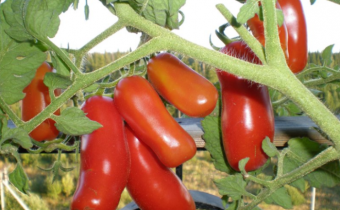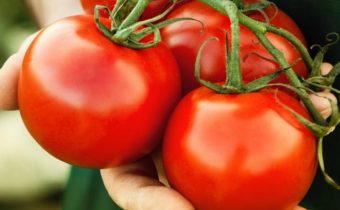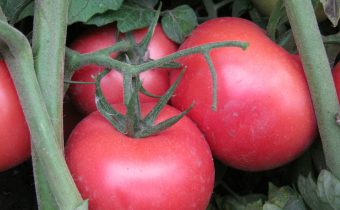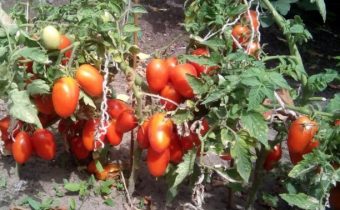How to feed tomatoes in the period of flowering and fruit set?
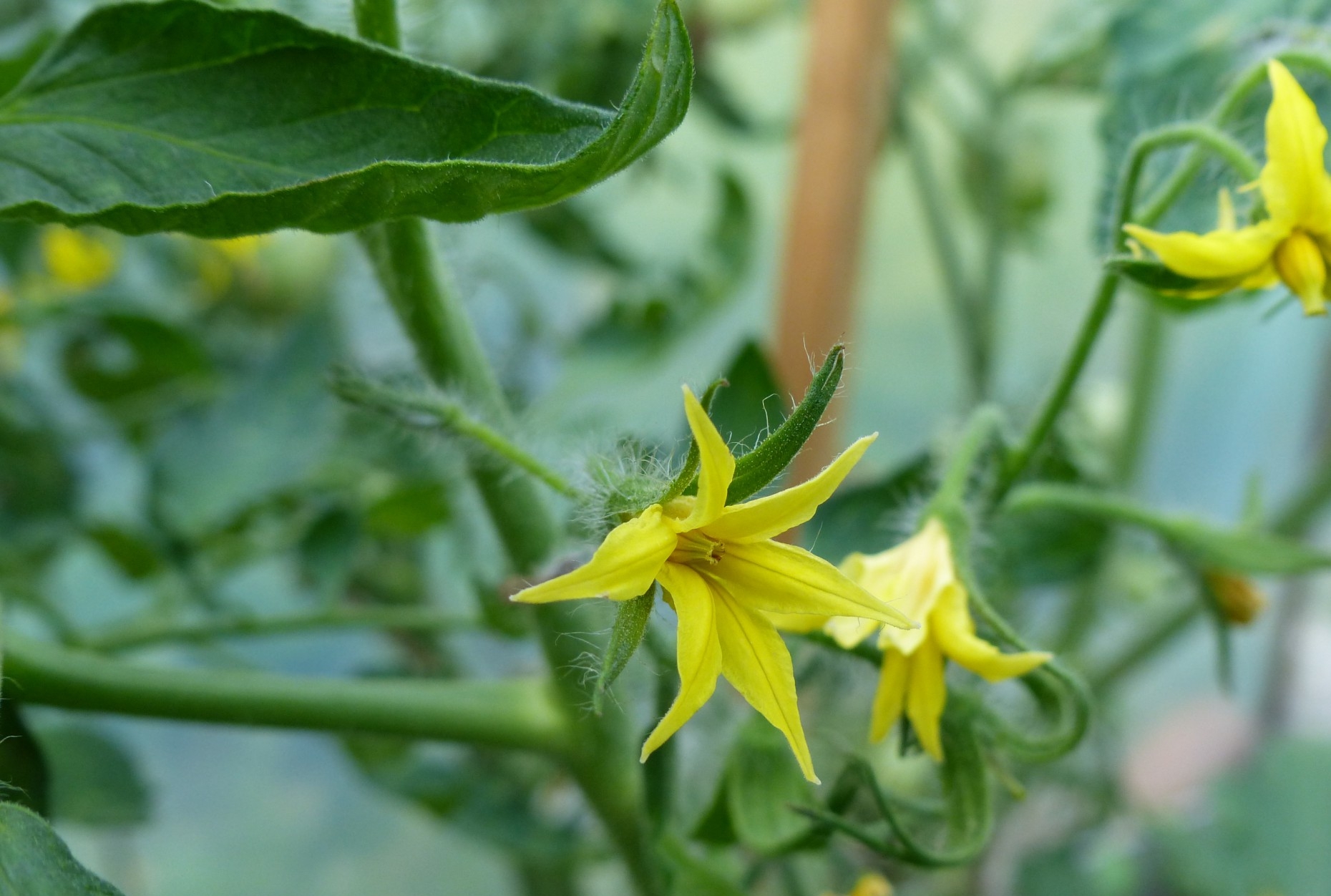
The topic is relevant, and it sounds like this, than to feed tomatoes during the flowering and fruit set period. After all, you understand that all crops need additional nutrition, as fertile, chernozem soils are far from being everywhere. Yes, even where they are, a stable result is not always guaranteed, all because nowadays the land is used very consumerly, it is grown from year to year, and only some agronomists apply fertilizer. So you can not do that there are no problems.
The importance of sub-feed for tomatoes
Tomatoes, in general, a culture that loves fertilizers, it responds well to mineral store preparations and to different organics, and you can use recipes of national experts. Fertilize crops can:
- under the root, when you pour them into the soil around the base of the stem, that is, thus providing food to the soil and root system, and it is the basis of a good green mass and in the future harvest, if only you choose the right feed, because there may be another problem - leaves a lot, but no ovaries and fruits. We will tell you further why;
- foliar spraying, when you feed tomatoes from a sprayer or a special garden sprayer. Through the leaves they get everything they need and grow, giving the harvest.
The optimal balance is the alternation of those and other types of feed. The first, as a rule, contribute approximately 10-14 days after transfer to the main site. Further, every two weeks, but if the soil is very poor, then more often. Fertilizers are needed by the earth, as well as crops. Good immunity does not make the seedlings hurt, they endure all the weather adversity. So, let's first talk about feeding tomatoes in terms of what fertilizers, and when to use.
See also: Tomato varieties alphabetically with photos and descriptions
How to make a feed?
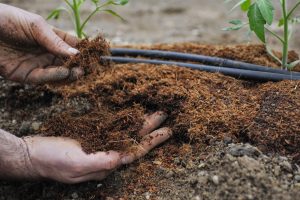 You know what fertilizers are, but it is not always possible to apply these or other, because when the bushes start to see fruits, it is absolutely impossible to use chemistry for spraying, so you will not get an ecologically clean harvest. How to make, let's look. You must first prepare the soil in the fall, after planting the seedlings in the ground. It is also necessary to give food to the seedlings so that it increases the green mass and is not thin and brittle, otherwise the tomatoes will sit for a long time and not give the ovary, and already after doing the processing of the tomatoes during flowering.
You know what fertilizers are, but it is not always possible to apply these or other, because when the bushes start to see fruits, it is absolutely impossible to use chemistry for spraying, so you will not get an ecologically clean harvest. How to make, let's look. You must first prepare the soil in the fall, after planting the seedlings in the ground. It is also necessary to give food to the seedlings so that it increases the green mass and is not thin and brittle, otherwise the tomatoes will sit for a long time and not give the ovary, and already after doing the processing of the tomatoes during flowering.
If the soil is poor, then feed 3-4 times a little, you need 5-6 times per season. If you are applying organic, then mineral fertilizers should be used in smaller quantities. At a permanent place, when the seedlings began, the nitrogen in the feed should be minimal so that the bushes do not outgrow. Complex drugs contribute every 14 days. You can spill them first, after organic alternating. When the fruits begin to ripen, it is better to cancel all chemistry, and use natural food or popular advice, so as not to spoil the harvest.
Tomatoes grow poorly. How to feed?
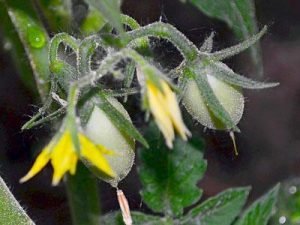 Of course, the plot you have to cook in the fall. After the harvest has been removed, it needs to be dug up and fed, it is best to use potash and phosphorus-based fertilizers at this stage.The first ones contain chlorine in the composition, it is harmful for tomatoes, but during the winter it will go deep into the soil, and phosphorus will also become so shaped that tomatoes will absorb it well. You can dig the soil with weeds. Further, you will make feeding, when you plant seedlings, and it is better to use the nitrogen species here, because you need a green mass now so that the stems do not stretch out.
Of course, the plot you have to cook in the fall. After the harvest has been removed, it needs to be dug up and fed, it is best to use potash and phosphorus-based fertilizers at this stage.The first ones contain chlorine in the composition, it is harmful for tomatoes, but during the winter it will go deep into the soil, and phosphorus will also become so shaped that tomatoes will absorb it well. You can dig the soil with weeds. Further, you will make feeding, when you plant seedlings, and it is better to use the nitrogen species here, because you need a green mass now so that the stems do not stretch out.
You can make and organic during digging - at the rate of square meter you bring eight pounds of the mixture - in equal parts litter, manure, compost, peat and 50 grams of superphosphate. You can also bury weeds or plant green manure plants.
See also: Tomato "Shuttle" variety description photo reviews
Important!
Fertilizers for tomatoes in the open field will be organic and mineral, but you should not flood the area, because tomatoes do not like oversupply.
In the seedling phase of the house, you can apply 2-3 times a solution of dry yeast - five grams per five liters. While planting in the soil you already add a more serious feed in the form of superphosphate - a complex of nitrogen, calcium, magnesium, phosphorus and sulfur. This feed reduces acidification, gives immunity and nourishes your tomatoes. One of the most sought after and effective tools.
Ready products from the store
You can use the following fertilizers, all nutrients are balanced in them, and your tomatoes will grow perfectly. If the fall was not able to properly prepare the soil, then do it in the spring using such means:
- Kemira Lux. The drug is dissolved in water, diluted according to the instructions;
- "Universal". This fertilizer is very good and does not harm the soil, completely assimilated, contains humic substances and a complex of elements. The drug can simply be scattered in the snow, and when it comes down, level the ground with a rake.
For information!
Frequently asked young summer residents the question whether it is possible to spray tomatoes during flowering. It is possible, because so the tomatoes will be better to digest the feed, but not in the heat and it is better to use more natural fertilizers, so as not to harm health.
During the transfer of seedlings I pits can be put and pour:
- Agricola. Dissolve the drug in water, pour during planting, and you can still use the complex up to five times per season, instead of other fertilizers;
- "Health" and "Multiflor" are all complexes that can be brought into the ground, mixing it and burying the bushes during planting, you can use an aqueous solution.
After two weeks in a permanent place
So, your seedlings should already be well received. It is time to make a complex mineral fertilizer and this is nitrophoska. In its composition in the optimal balance of phosphorus, potassium and nitrogen. One liter uses half a teaspoon of fertilizer. Under the bushes need at least 500 grams of fertilizer. Also, about a week after planting the seedlings to a permanent place, you can shed the area with a weak solution of manganese, which will help the seedlings and save you from the pathogenic environment, which also may prevent your tomatoes from growing and developing. Such tactics will help the seedlings to quickly adapt, to grow greens, after which the flowers will be formed. Next, follow the care of the tomatoes during the flowering period.
See also: Tomato "Banana Orange" characteristic and description of the variety
Feed throughout the season for flowering and ovary
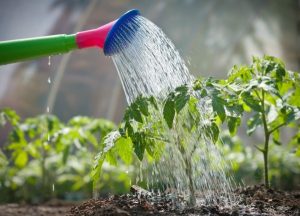 Two weeks passed after the first watering of the seedlings at a new place, it is time to apply fertilizer once again. In a bucket of water dissolve a tablespoonful of potassium sulfate, 500 grams of litter. Under the bushes to pour such food in the amount of half a liter.
Two weeks passed after the first watering of the seedlings at a new place, it is time to apply fertilizer once again. In a bucket of water dissolve a tablespoonful of potassium sulfate, 500 grams of litter. Under the bushes to pour such food in the amount of half a liter.
Or there is another option to feed a tomato during the flowering period. In a bucket of water, dissolve the nitrophobia a tablespoonful and pour a liter for each tomato. In the same period, you can also apply spraying from the defeat of diseases that also inhibit the growth and development of culture - pour calcium nitrate with a spoon in a bucket of water and spray the bushes.
Important!
All foliar feeding or spraying carried out in the morning or evening, not in the heat and fog.
To make the ovary begin to form better and faster, use this recipe - in a bucket of water (hot) dissolve two liters of ash and 10 grams of boric acid, let the mixture stand for 24 hours, and pour a liter under each bush. This feed also helps well from parasites in the soil. Make sure that the ground under the bushes is slightly wet every day, but not wet and with a crust, so the risk of developing diseases and reproduction of parasites will not increase, which will affect flowering, ovary and future crops.
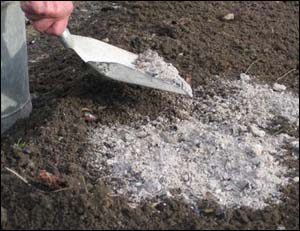 You can also sprinkle tomatoes with boric acid on the ovary - 10 grams of acid dissolve in a bucket of hot water, then spray the ground next to the bushes, first pour the tomatoes first so that the roots do not get burned. This recipe helps a lot. If you want to spray the bushes with this solution, then do not take more teaspoon of tea boric acid on a bucket of hot water, so as not to burn the leaves.
You can also sprinkle tomatoes with boric acid on the ovary - 10 grams of acid dissolve in a bucket of hot water, then spray the ground next to the bushes, first pour the tomatoes first so that the roots do not get burned. This recipe helps a lot. If you want to spray the bushes with this solution, then do not take more teaspoon of tea boric acid on a bucket of hot water, so as not to burn the leaves.
You can also add 2-3 times this fertilizer - dissolve in a bucket of water mullein 15 grams and potassium sulfate - 20 grams. You can take and chicken droppings, which are bred in a ratio of 1:20. You can alternate all these feeds, remember that we told you about the finished products, which can also be used to feed tomatoes during flowering and tying, but follow the intervals of 2-3 weeks.
When tomatoes already form fruits, then chemistry is better not to use, you can spray the bushes and spill the infusion of nettle, which wandered for a week. You can also drop 3-4 drops of iodine into a bucket and use it for spraying.
All these feeds can help you get a great harvest, the results can be seen very soon after you have fertilized.



